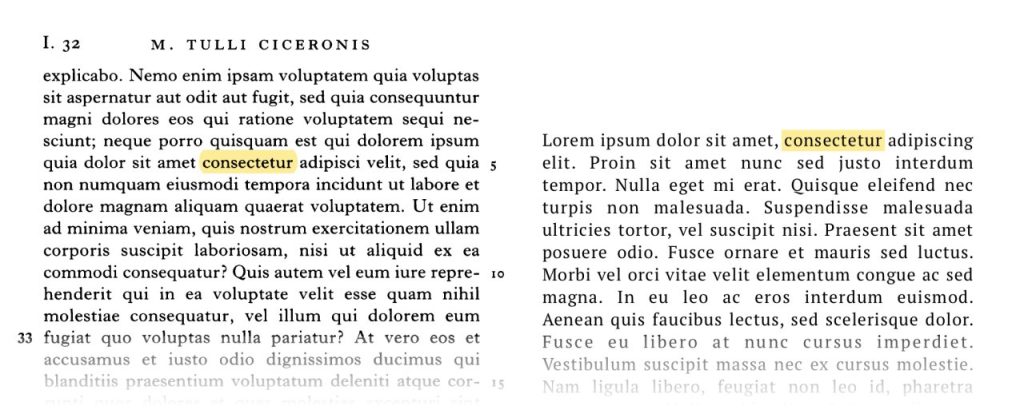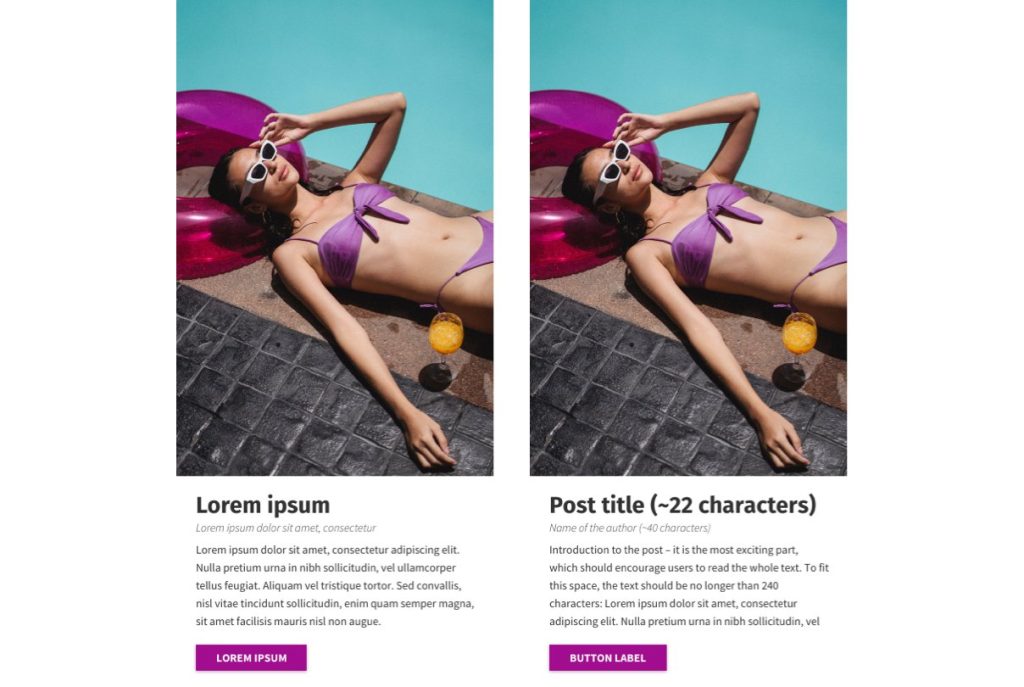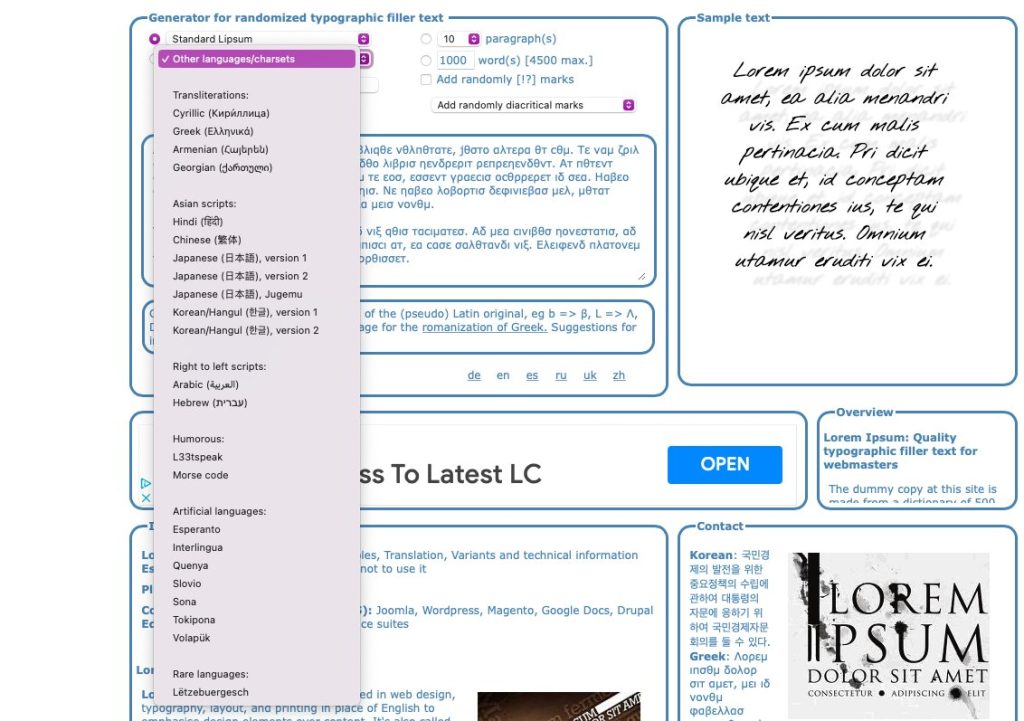What is Lorem ipsum?
In short, it’s a sickness of the world of design and web development.
But seriously…
Lorem ipsum is an enigmatic model text that designers and developers use in wireframes, mockups, prototypes, or the app in progress. It’s meant to illustrate the visual form of the document when the final copy is in the making.
Where did it come from?
Some sources indicated that Lorem ipsum is just a modern gibberish that mocks Latin for more refinement. The one who busted that myth was Richard McClintock, a Latinist from Hampden-Sydney College (Virginia) who searched for the word ‘consectetur’ and thus discovered a text corresponding to ‘De finibus bonum et maiorum’ written in the 1st century by none other than Cicero.

Other stories suggest that somewhere in the 1500s, an unknown printer scrambled words in Cicero’s text to highlight his work’s quality without emphasizing the text’s meaning. But manual paragraph setting is a backbreaking and, therefore, expensive job. Hardly any early modern typesetter would spend extra resources this way to create a fake text while other prints were at the fingertips. Furthermore, no other examples of Lorem ipsum or alternative dummy texts were used in publishing until the 20th century.
And the obscured meaning? By the 19th century, Latin had remained a universal language spoken and understood by the elites. If such a clever typesetter really existed, reading the demo print would be as mind-bending as this viral text:
Aoccdrnig to a rscheearch at Cmabrigde Uinervtisy, it deosn’t mttaer in waht oredr the ltteers in a wrod are, the olny iprmoetnt tihng is taht the frist and lsat ltteer be at the rghit pclae. The rset can be a toatl mses and you can sitll raed it wouthit porbelm. Tihs is bcuseae the huamn mnid deos not raed ervey lteter by istlef, but the wrod as a wlohe.
Or at least this mix-up:
According to Cambrigde research at doesn’t matter University, it in order the what letters in a are word; only the important letters is that thing the first and last right place be at the. The total rest can be a mess, and can you still it without read problem. This human mind is because the read does not every letter the word as by itself but whole a.
It would draw attention to the randomisation itself – not the craftsmanship of the printing office. Further research by McClintock showed that the De Finibus edition of 1914 contains almost the exact phrase, ‘Lorem ipsum quit dolor sit…’ Perhaps other versions of ’De finibus bonum et maiorum’ were blurred or otherwise damaged? Maybe there was no dummy text until the 20th century?
It was around the 1960s when Letraset reached for the Lorem ipsum to advertise their printing novelties, namely dry transfer decalcomania plates that allowed direct reproduction of text without any special training. It was cheap and easy to work with – efficient enough to spare a catalog for some random text in Latin. And I believe the choice was accidental:


In the second half of the 20th century, Latin almost entirely disappeared from everyday communication. Barely anyone could recognize or understand Lorem ipsum, yet it was a fairly legit piece of text and no one could question its syntax. Thus, choosing a little-known random excerpt from classic literature was an intelligent move that shifted users’ focus to the product and contributed to the democratization of graphic design, especially since this paragraph is relatively easy to lay out, even for non-professionals.
The use of Lorem ipsum took off in the 1980s when Aldus (later Adobe) Pagemaker and other computer desktop publishing programs started having this particular placeholder text in their feature sets. That’s when it became an actual standard. Now it’s so common that the most popular editors and apps lived to see their dedicated Lorem ipsum generators. Sketch, Figma, Chrome, GitHub, WordPress, Atom – you name it. You can even spawn some Lorem ipsum with your MS Office!
It’s spreading like a virus!
Oook, so what’s wrong with it?
It’s too easy
It poses hardly any challenges: very long or short words, accents, numbers, special characters, glyphs, emojis, and other typographic marks. You just copy the amount of dummy text that suits your design et voilà. No overflowing headings, no excessively long leadings, no oddly short paragraphs – nothing that could serve as a crash test for the design; and everyone should already know the mantra: fail fast, fail often. Fail on the real-life examples cause that’s the way communication works.
It’s more exclusive than you think
It applies only to the Roman alphabet and is useless with other scripts, ideograms, texts written from right to left or vertically, etc. There are dummy text alternatives available for various languages:
But this might only give you a false conviction that you are genuinely designing with every language in mind, especially if you’re working with a text system that is not natural for you. Without attention to such intricacies, the design can look like that when a single template collides with the reality of English, German, Ukrainian, and Hebrew:

This sample text was quickly drafted for this post and translated using Google Translate just to illustrate how different languages might behave. Some fit nicely enough, but German and Ukrainian definitely need more love. Hebrew must look odd and disrespectful to its users when aligned to the left.
Similar challenges will emerge with any extremity: long, technical terms, lots of numbers, units, abbreviations, emojis, hashtags, heavily decorated text, and mathematical symbols. These are just a few variables that can significantly affect the overall user experience.
It is a spurious coping mechanism
Feel overwhelmed with business strategies and all the copywriting strategies? Stressed about being ridiculed by the wizards of marketing? Maybe you even suffer from blank page paralysis, convinced that the first drafts must be perfect?
Using Lorem ipsum seems to be the lowest-hanging fruit, but it doesn’t make the work any easier. You’ve just replaced a white wall with a more or less uniform wall of gray. But in Latin. It’s futile unless you’re working on laying out the exact part of Cicero’s ‘De finibus bonorum et maiorum.’ 🤷♀️
It can be mistaken for the final text
Some say that Lorem ipsum does exactly the opposite: it sends a clear message that the work is still in progress. Well, it’s not bulletproof. Otherwise, we wouldn’t have those Lorem ipsum bloomers:


It’s boring
Anyone who uses Lorem ipsum in excess eventually gets bored with looking at the exact phrase over and over again. Some people used this as an opportunity to shake things up and build funny fake text generators. Samuel L. Ipsum, Hodor, Cupcake, Bacon, DeLorean, Cat, or Cheese Ipsum are just a few loose examples of many creative ‘ipsums’ you can find on the web.

It is amusing as a standalone play on the Latin text but poured into a mockup carries even more design hazards. Most such generators use common English words to assemble sentences that look reasonable enough to be confused with a real-life copy. It’s not so bad if it makes the client laugh, but someone could be in trouble if the dummy sneaks into the live app, especially if there’s a tiny margin for a bit of humor.
It’s a lost opportunity
Product design is a co-op game that requires lots of observation, a bit of drawing, and hours of discussions among stakeholders. You should envision the product and how it communicates with the world, and introduce dialogue-provoking elements. People generally lack imagination and they can get stuck without something tangible to either love or hate.
Text content is one of those components that can make or break the whole design. What does Lorem ipsum evoke? Hardly anything. It minimizes the message to a visual item that echoes lack of care or imagination, giving a false impression that this Latin gibberish could be replaced with other gibberish as long as it takes about the same amount of space and attention.
There are also team product owners and clients who, by some miracle, never came in contact with Lorem ipsum and are genuinely astonished that the mockup came in Latin instead of their native language. So you end up explaining Cicero’s dialogue instead of moving the project forward.
How to live without Lorem ipsum?
With joy and confidence!
You don’t have to be a professional copywriter or a domain specialist to set the mood for your project. If you don’t have any draft copy at hand, just name the section with your words and write a short paragraph describing the page content. Should the system be deadly serious, highly specialized, cheerfully professional, or maybe calm and empathetic? Nothing fancy – you’re not aspiring for the Nobel Prize in Literature!
If you’re feeling stunned – start writing about the function of each text element. Use the dummy text only to add some volume. At worst, you’ll end up with a piece of documentation for the whole team:

Come to think about it – this is a decent base for a tooltip or a placeholder text for the inputs in the final mockup 🤔. So maybe Lorem ipsum is indeed a waste of time?
You can read more about the history of Lorem ipsum on: Lorem ipsum : nouvel état de la question | La question du latin
And if you need a team that considers proper research important…
Let’s talk!Head of UX who loves making sense of noise, searching for trends and inspirations, and exploring the humane face of technology. Justyna shares her passion not only within Makimo but also as a lecturer at UEHS, Warsaw, and a co-host of the Let the Tech Out podcast. She writes her own story not only using words and pixels but also brush strokes, seams, knitting stitches, yoga asanas and running miles.




